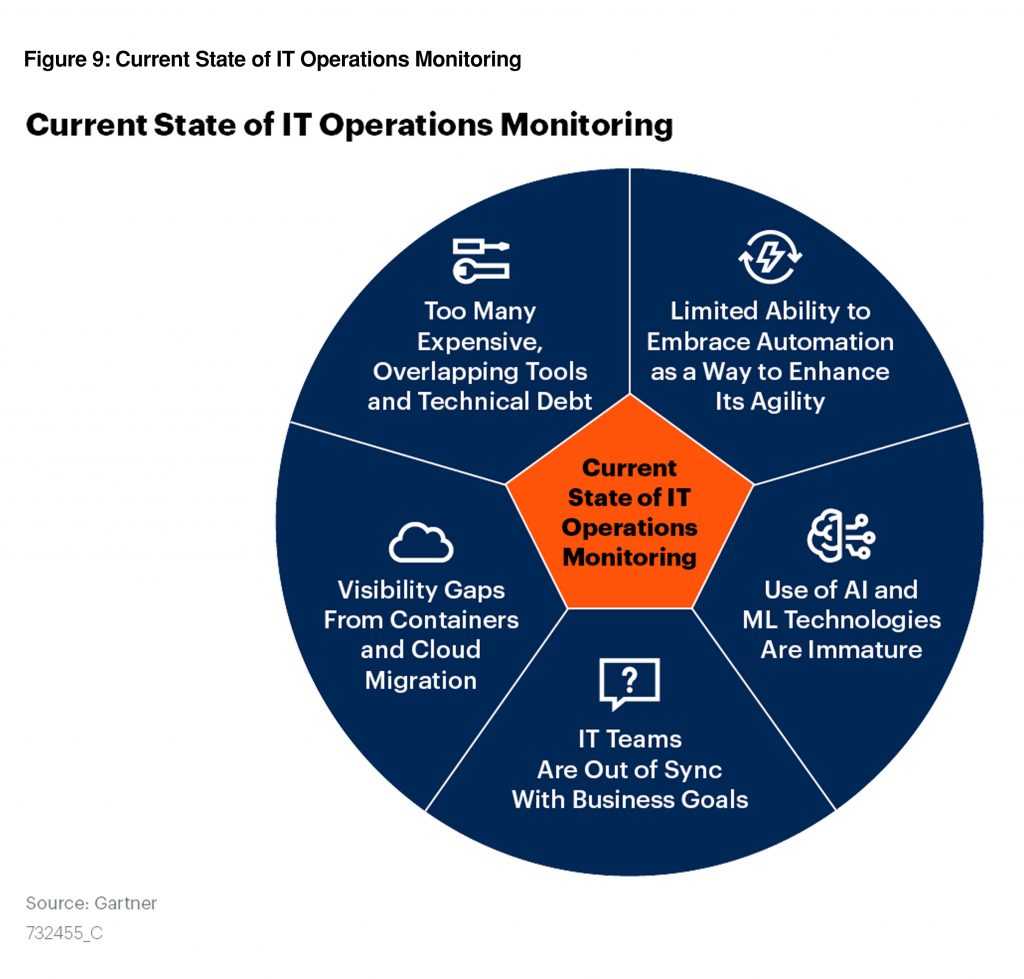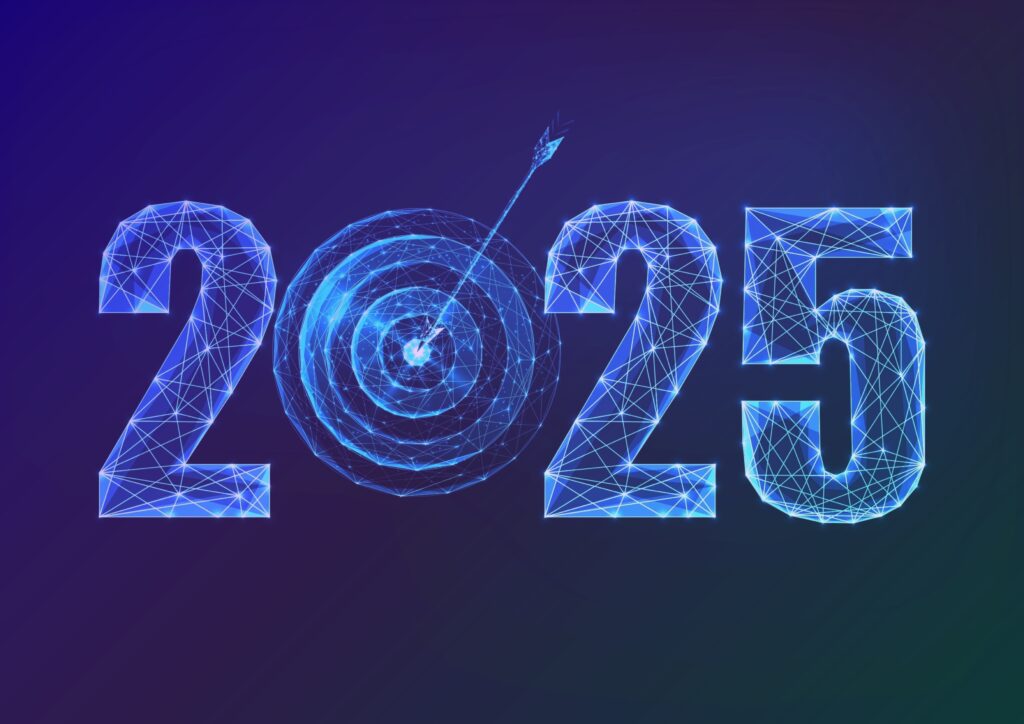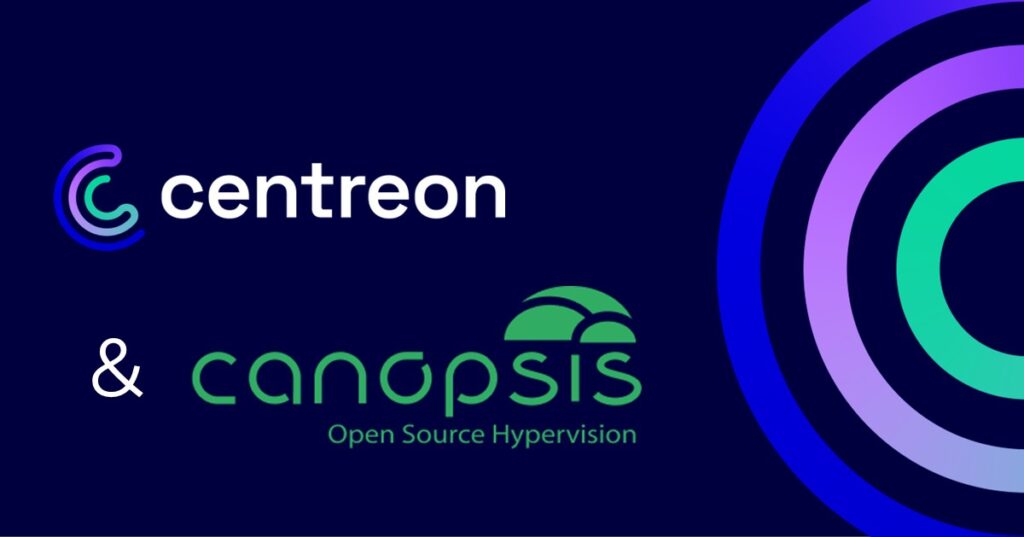I&O practitioners are adopting new technologies in their organization’s transition towards business observability. They are leaving behind legacy, disconnected ITOps monitoring practices and solutions to build an observability stack that matches their digital organization’s means and ambitions. This blog post provides some actionable tips to build the kind of interconnections that are prerequisites to modern, observable ITOps—and the perfectly connected experiences digital consumers expect.
Diagnosing disconnected ITOps monitoring
The first step in paving the way for a modern observability stack is diagnosing the extent of disconnection in your monitoring practices and technological toolbox. How many of those situations below apply to your organization?
- NO COMMON PLATFORM. There’s no common platform to track and analyze performance. Everyone has their own preferred tools, some capabilities overlap.
- TECHNOLOGY CHASM. There’s a chasm between legacy or on-prem IT assets and more recent technologies—in some cases, you’ve given up collecting data from some assets that nonetheless support essential workflows.
- UNMINED DATA. There’s no centralized data repository—data is duplicated if not lost; it cannot be mined for insights.
- LOW MONITORING SCOPE. The percentage of your IT estate that you’re able to monitor is incredibly low, and it’s affecting performance.
- NO AUTOMATION. IT automation is a priority for your organization, but your IT monitoring solution does not support automation.
- NO CONNECTORS. Monitoring and testing new technological assets is a cumbersome process because there’s no APIs or connectors readily available.
- NO INTEGRATION. You’ve run out of budget (if not patience) for interconnecting your monitoring solution with other IT Operations tools (think Splunk, PagerDuty, ServiceNow)—although you’re aware this is best practice.
- NOT SCALABLE. Your monitoring platform is not evolving as fast as the wave of changes that swept your organization in recent months—from remote work to digitalization to edge expansions and IoT.
- NOT AIOPS READY. Your organization acquired a brand new AIOps solution—and you wish your monitoring solution would be compatible with it.

Source: Gartner, 2021 Strategic Roadmap for IT Operations Monitoring
To learn more read this article: 5 Trends for a New ITOps Roadmap in 2021.
Switching to connected monitoring: A 4 step blueprint
1. Collect data from the full diversity of your IT estate: networks, servers, applications, storage, databases, devices, equipment, etc.—draw a single line of sight across physical, virtual and hybrid infrastructure.
What to look for:
- Largest monitoring scope possible from cloud to edge and network to applications.
- Ability to monitor newer technologies such as cloud, edge, SD-WAN along with legacy infrastructure—from a single tool.
- Ease and speed of implementation.
2. Stay accurate and current: pick-up new deployments and easily manage a decentralized IT environment with minimal efforts.
What to look for:
- Ability to seamlessly monitor new technological investments in the cloud, containers or at the edge.
- Ability to auto discover new assets and adjust monitoring configuration accordingly.
- Open source-based for scalability.
- Readily available and always updated library of professionally developed connectors as new technologies are adopted—ex. blockchain.
- Plug-and-play configuration templates covering the most commonly used IT equipment.
3. Support automation initiatives: become a partner in automation initiatives and add value to constant digital business optimization efforts.
What to look for:
- Automatically find and monitor new assets as they’re tested or launched, such as SaaS, cloud, containers, SD-WAN, or Wifi.
- API-centric platform that can integrate with leading IT Automation tools such as Ansible
4. Provide an immersive platform for seamless collaboration across teams, laying the ground for a next generation ITOps platform that will fully enable business observability.
What to look for:
- Ability to build a centralized platform with multiple and customizable access points—to manage both NOC and branches ITOps monitoring.
- Ability to unify, pool, and analyze data from a diversity of sources and to feed it to other enterprise knowledge platforms.
- An always evolving library of APIs that tightly integrates with other key ITOps or DEVOps tools using modern APIs, for example ITSM, APM, DEM, and automation and AIOps tools.
Let us help you pave the way for business observability—contact us today.
Want more tips? Check out How to design a connected ITOps monitoring experience.















